Bougainvillea is a bright Brazilian beauty who needs good lighting and space. Currently, there are about 14 plant species that are found in the wild and approximately 300 artificially bred varieties. Among the bougainvilleas, one can find shrubs with winding shoots, the height of which does not reach even half a meter, and small trees.
Despite all its beauty and diversity, a flowering culture is not very popular among domestic flower growers and is rarely found in residential premises. Bougainvillea is undeservedly considered a capricious plant that is reluctant to grow at home, but in fact, simple care in accordance with several simple rules will allow you to grow a healthy plant.
Content
Characteristics of bougainvillea and species diversity
Bougainvillea is a small genus of evergreens that belongs to the Niktaginov family and named after the French traveler L.A. de Bougainville. The birthplace of the flower is considered to be Brazil. The plant is found in the form of shrubs and low trees with curly lianike branches. Shrub shoots are covered with long spiky, but rare spikes, with which they are fixed on a support.
As the liana grows, its stems are covered with a dark brown bark, which in mature vines acquires a grayish tint. Petiole ovate leaves are alternately located on the entire surface of young shoots. Small bright green leaves have smooth edges and a predominantly smooth surface, but varieties with pubescent leaf blades are found.
Tubular small flowers of shrubs, collecting in racemose inflorescences, do not have decorative value and quickly fall off. But the bright bracts of the creepers that surround the nondescript yellow-white flowers amaze with their beauty and variety. Each flower surrounds three large, like paper bracts, through which thin veins are visible. The shape and color of the bracts depends on the plant variety. Bracts retain their decorative effect for quite some time. You can appreciate the beauty of a flowering vine by the photo.
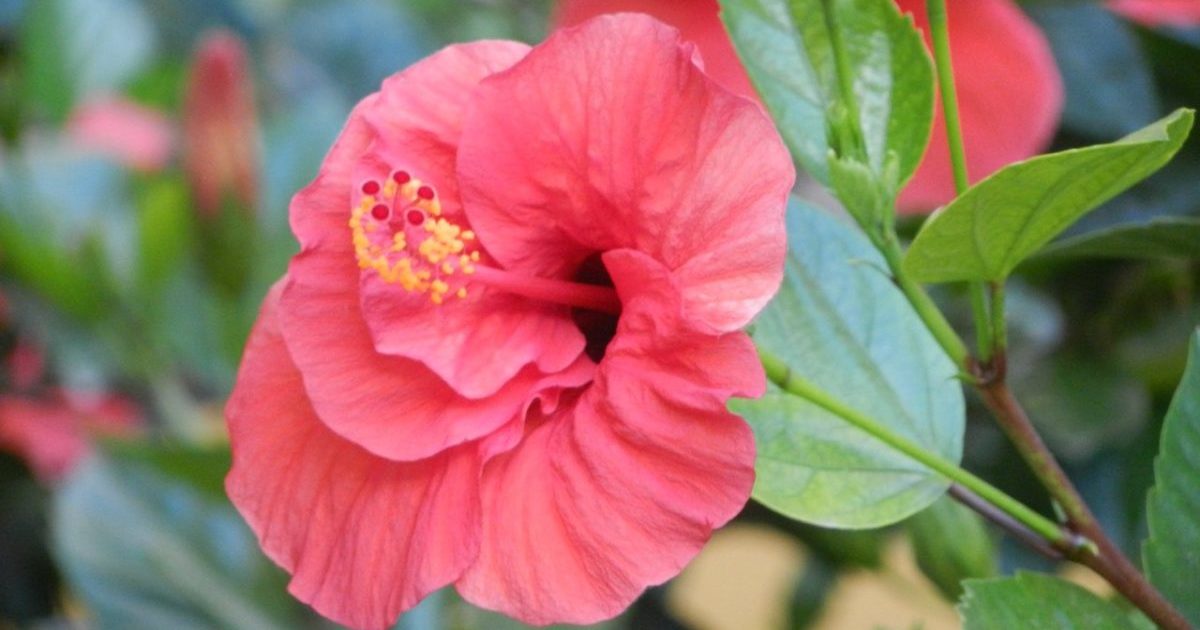 You may be interested in:
You may be interested in:In nature, there are about 14 species of bougainvilleas, however, only three varieties and their varieties are suitable for cultivation as a pot culture. These types include:
- Bougainvillea Naked. The most popular indoor bougainvillea, named after its bare, highly branched stems. The branches of the bush are covered with glossy oval leaves with a pointed edge. There are varieties with raspberry, violet, yellow, orange and red bracts, which for a long time retain their decorative effect.
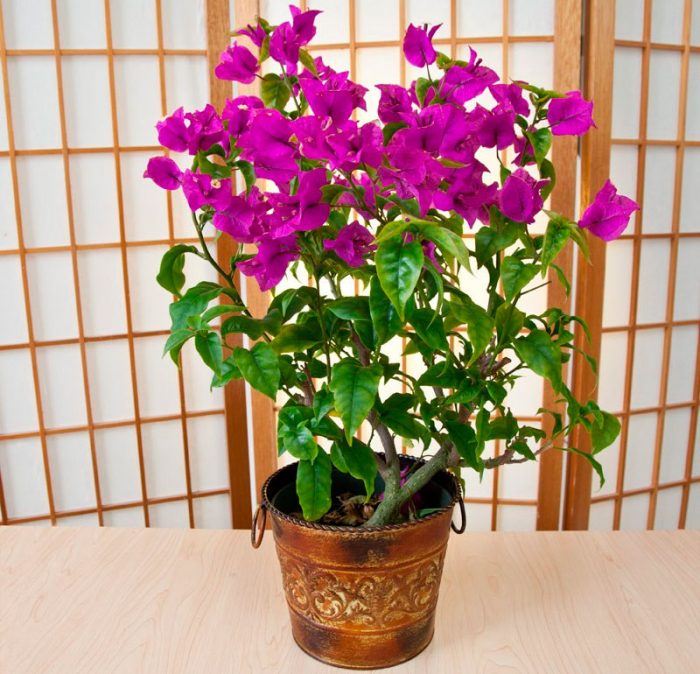
Bougainvillea Naked - Bougainvillea Wonderful. A fast-growing vine with long and flexible shoots that densely cover numerous sharp spikes. Dark green heart-shaped leaves have a velvety surface and a fairly dense structure.The bright red bracts of the creeper gradually fade as they wither, eventually acquiring a white color.
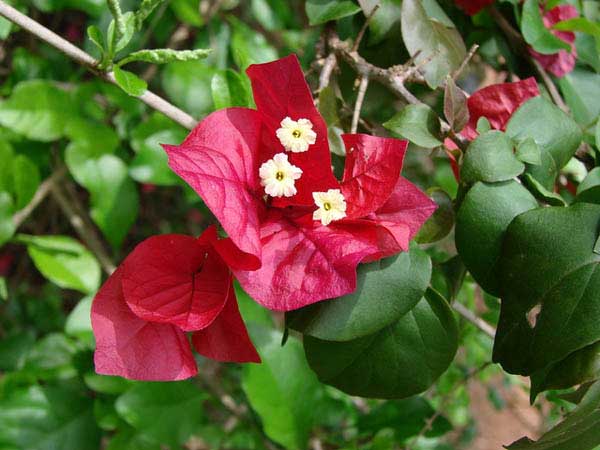
Bougainville Wonderful - Bougainvillea Peruvian. Variety with long weakly curly shoots that do not let out the lateral processes. The branches of the bush are covered with narrow ovate leaves with a pointed end. Terry pink or purple rounded bracts are surrounded by small white-yellow flowers.
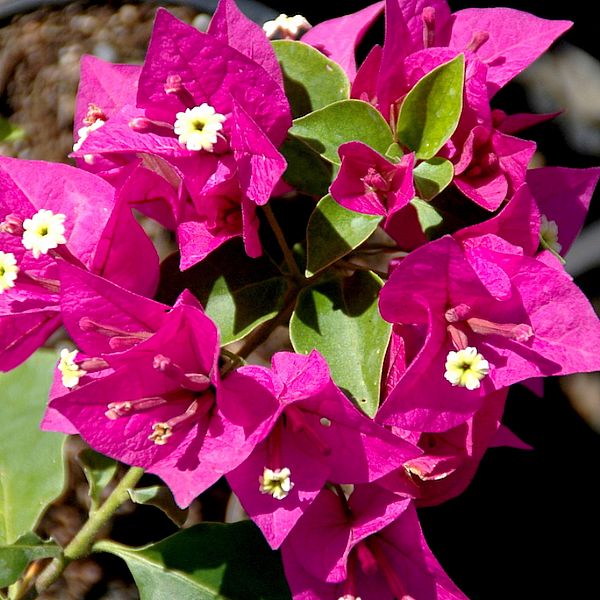
Bougainvillea peruvian
Caring for bougainvillea at home and the rules for maintaining the apartment
Bougainvillea is an unpretentious flowering culture that is ideal for keeping in an apartment. Growing this tropical flower indoors, the main thing to remember is that it needs a lot of light and does not tolerate cold air currents.
Lighting
Bougainvillea is quite demanding on lighting. The quality and duration of flowering depends on the amount of light that the shrub receives.
Only in particularly hot periods does the plant need protection from the midday sun. For easy shading, you can use a thin curtain. Lack of light can lead to fading of leaf blades and a complete lack of flowering. An ideal place to place a flower would be the southern window sills.
Temperature and humidity
During the period of active vegetation, which occurs in spring and summer, it is recommended that the thermophilic shrub be kept at a temperature of 22 to 25 ° C. In winter, the bush is recommended to be kept in a cooler room, the temperature of which is in the range of 12-16 ° C. Such wintering stimulates further flowering of the shrub.
For normal growth, the shrub needs high humidity. Installing a container of water near the plant will help solve the problem of dry air. In the absence of flowering, you can moisten the leaves of the shrub with a spray bottle. It is not worth spraying the flowering bush, water entering the bracts will lead to their rapid withering.
Watering and feeding
In the spring-summer period, the flower needs regular and plentiful watering. Florists recommend watering the plant immediately after the topsoil has dried. The earthen substrate in the pot should always remain slightly moist. In winter, the frequency and intensity of irrigation should be minimized. It is enough to moisten the substrate slightly to prevent it from completely drying out.
From spring and flesh to mid-autumn, the plant needs additional nutrition. As a top dressing, it is best to use liquid fertilizers for decorative flowering crops. It is recommended to feed the bush 1 time in 14 days. A flower in hibernation does not need to be fed.
Flowering Care
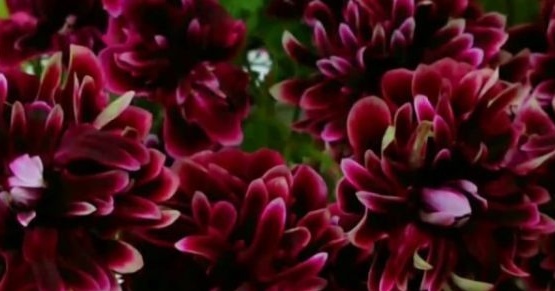 You may be interested in:
You may be interested in:Blooming bougainvillea needs frequent and plentiful watering with well-defended water. Drying of the soil can cause a fast wilt of the bracts. Regular application of complex fertilizers also contributes to long-term flowering of shrubs.
A pot with blooming bougainvillea cannot be moved, because a sharp change of location can lead not only to a cessation of flowering, but also to complete exposure of the bush.
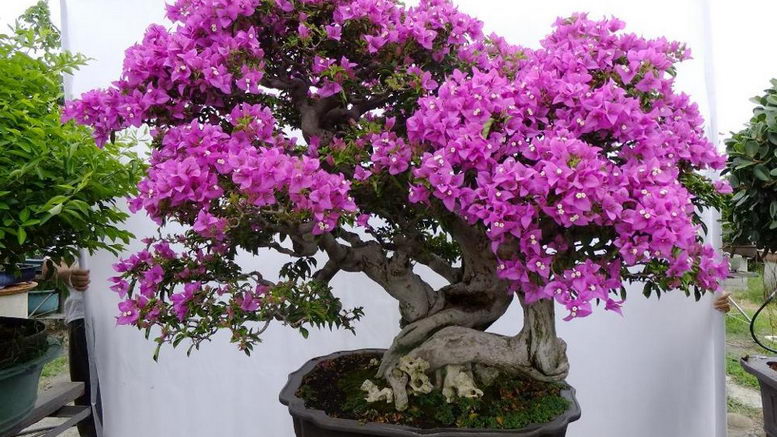
Pruning and pinching
Regular pruning not only helps to inhibit the growth of the bush, but also improves its appearance. It is recommended to carry out the trimming procedure three times a year:
- The first pruning is carried out in early spring before the start of active growth. During spring pruning, damaged, withered and weakened branches of the bush are removed.
- In summer, exclusively cosmetic pruning of the plant is carried out, during which wilted inflorescences are cut.
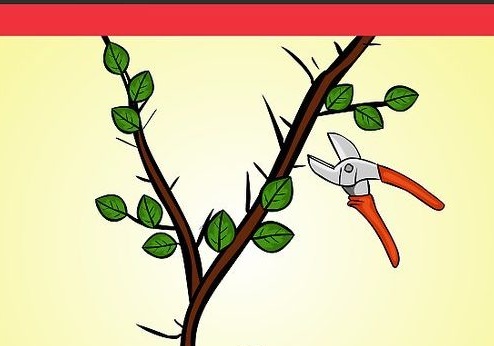
Pruning rules - In the fall, immediately after the flowering of the shrub, it is also recommended to carry out the pruning procedure. In the autumn months, before the dormant period begins, young shoots are shortened. After trimming, 2/3 of the initial length of the shoots and 6-8 buds on each of them should remain. Excess and incorrectly growing shoots are cut off completely. Touching old branches older than 3 years is not recommended.
Winter preparations
Preparing the bush for cold wintering plays an important role in the process of growing it. Starting from mid-autumn, the plant must be prepared for the rest period. To do this, the number and abundance of irrigation is gradually reduced, and fertilizer application is completely stopped.
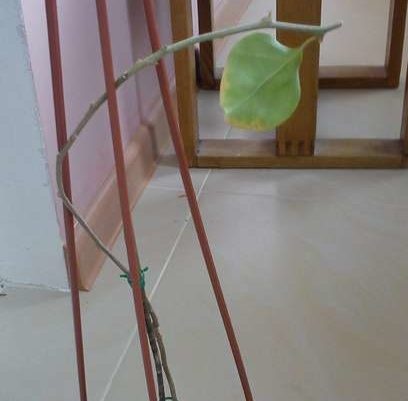
This is due to the fact that a cool room and the absence of foliage significantly slow down the process of evaporation of moisture from the soil surface. If the bush has retained part of the foliage, then to maintain optimal substrate moisture content, one watering of 15-20 days is enough.
Diseases and Pests
The tropical beauty is quite resistant to various diseases and pests, however, improper care significantly reduces her protective functions:
- The lack of iron and other nutrients in the soil leads to damage to the bush by chlorosis. You can detect the disease by the faded leaf plates of the flower. Making complex fertilizers and treating foliage with an iron chelate solution will help get rid of the disease.
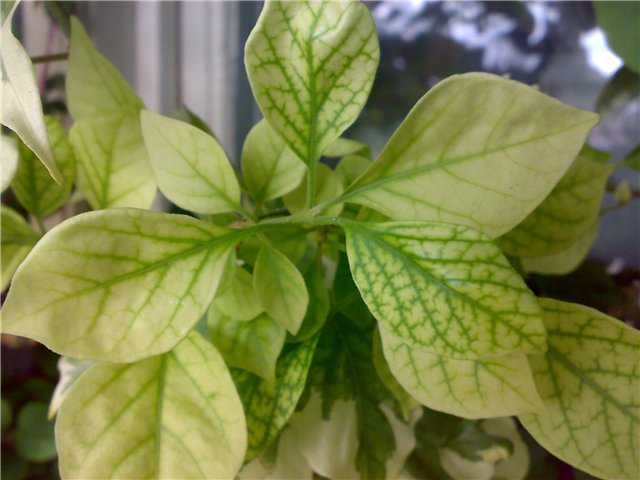
Chlorosis - Stagnation of moisture in the soil can cause root rot. The plant can be saved only with the early detection of the disease, when the rot has affected only a small part of the roots. To do this, remove all rotten roots, treat the plant with antifungal drugs and completely replace the earthen substrate.
- The plant may also be attacked by harmful insects such as aphids, spider mites and mealybugs. Double treatment with insecticides will relieve the plant from aphids and worms, and acaricides from spider mites.
Propagation, growing and transplanting of room bougainvillea
Indoor bougainvillea is able to reproduce in three ways: cuttings, seeds and air layers. However, most flower growers give preference to cuttings, without resorting to other methods of propagation of the bush. Growing bougainvillea from cuttings is a fairly easy and reliable method that even a beginner grower will cope with:
- Propagation by cuttings is recommended in late spring or early summer.
- As cuttings, segments of young semi-lignified shoots 10 cm long are used, on which at least 1 kidney remains.
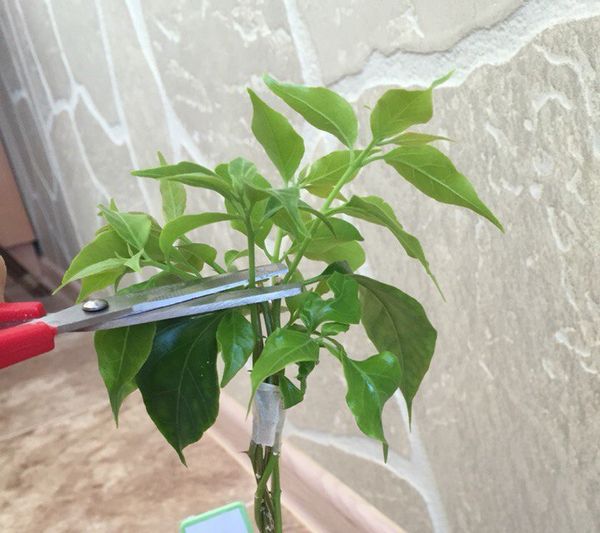
Pruning cuttings - The lower leaves of the cuttings are cut off, and the rest are cut in half to reduce the area of moisture evaporation.
- The cuttings must be prepared for planting in an earthen substrate. To do this, planting material is placed for several hours in a container filled with warm water, and the cut-off point is treated with coal powder and a growth stimulator.
- It is recommended to root the cuttings in a soil mixture of sand and peat, taken in equal quantities.
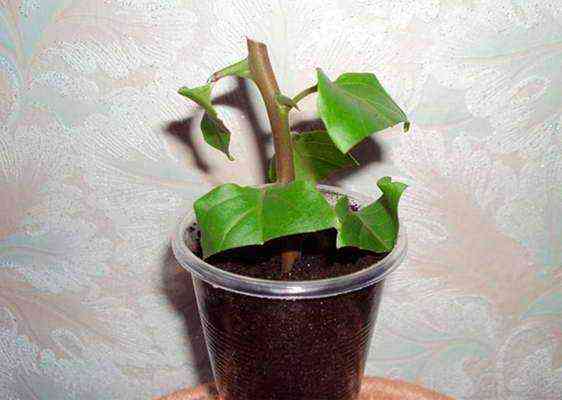
Rooting cuttings - To create greenhouse conditions, the container with cuttings is covered with a plastic film.
- A greenhouse with cuttings must be kept in a well-lit place at a temperature of at least 25 ° C.
- With regular ventilation and watering, the stalk will take root after 6-8 weeks, after which it can be transplanted into a small pot for growing.
- A young plant is transplanted into a constant container after its roots fill the entire space of the previous one.
The procedure is best performed in the spring, immediately after the end of the dormant period. For planting a bush, it is better to choose small but deep containers. The diameter of each next pot should be a couple of centimeters larger than the previous one. Suitable soil for the bush can be purchased at a specialized store or mixed independently from turf, humus, sand and peat, taken in equal proportions.
Transplant Algorithm:
- Well moisten the soil in the pot, for further extraction of the bush.
- Fill the bottom of the new tank with a 2-4 cm wide drainage layer. Expanded clay, fine pebbles or broken brick can serve as drainage.
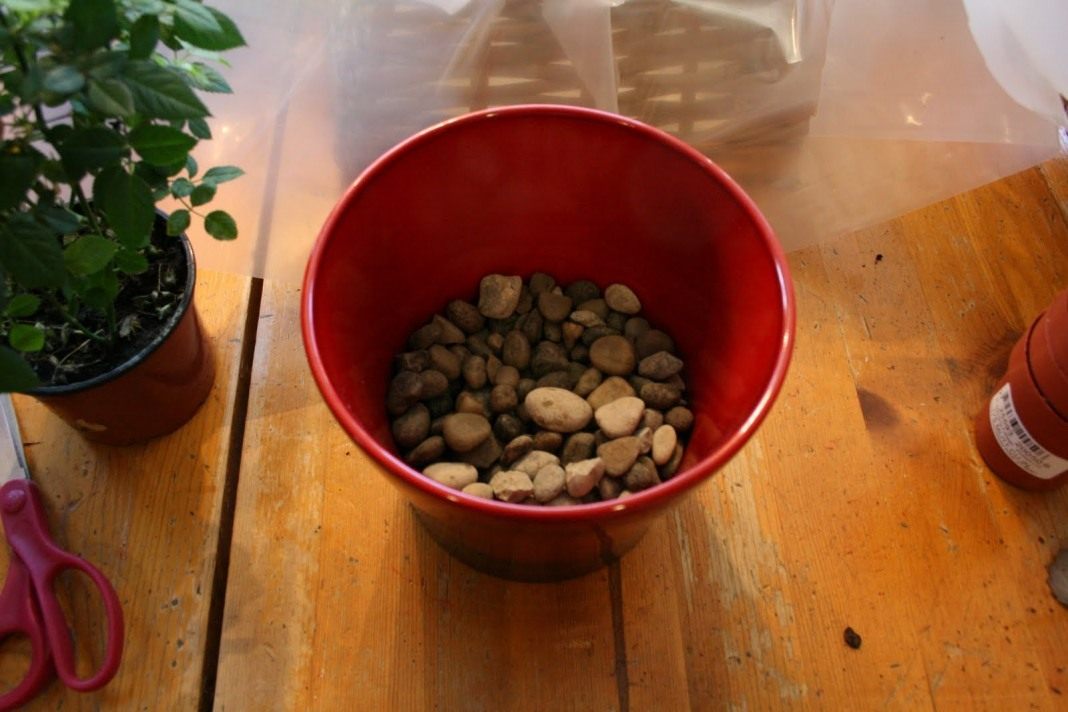
Drainage - Spread a layer of soil mixture over the drainage. The width of the soil substrate should be approximately equal to the drainage layer.
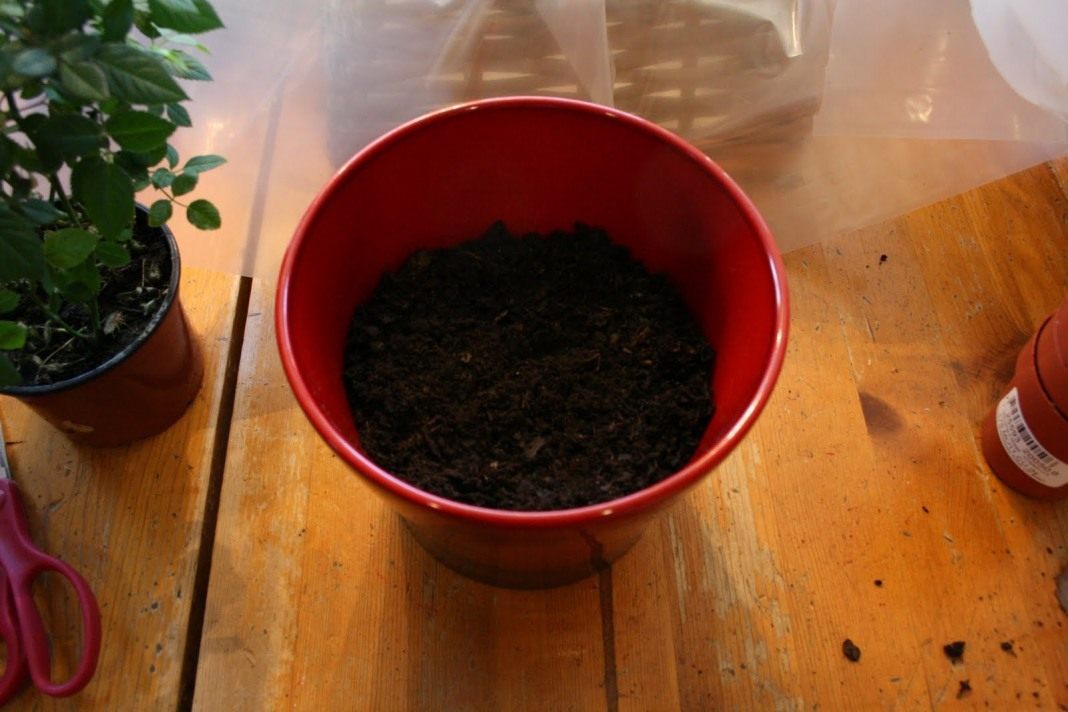
Priming - Carefully remove the plant from the old container and inspect its root system for diseases, trying to disturb the earthball as little as possible.
- With a lump of earth, place the bush in a new pot.
- Fill the void of the pot and lightly crush the soil around the flower.
- Moisten the soil.
A few days after transplanting, the plant should be in the shade for faster adaptation to the new earthen substrate.
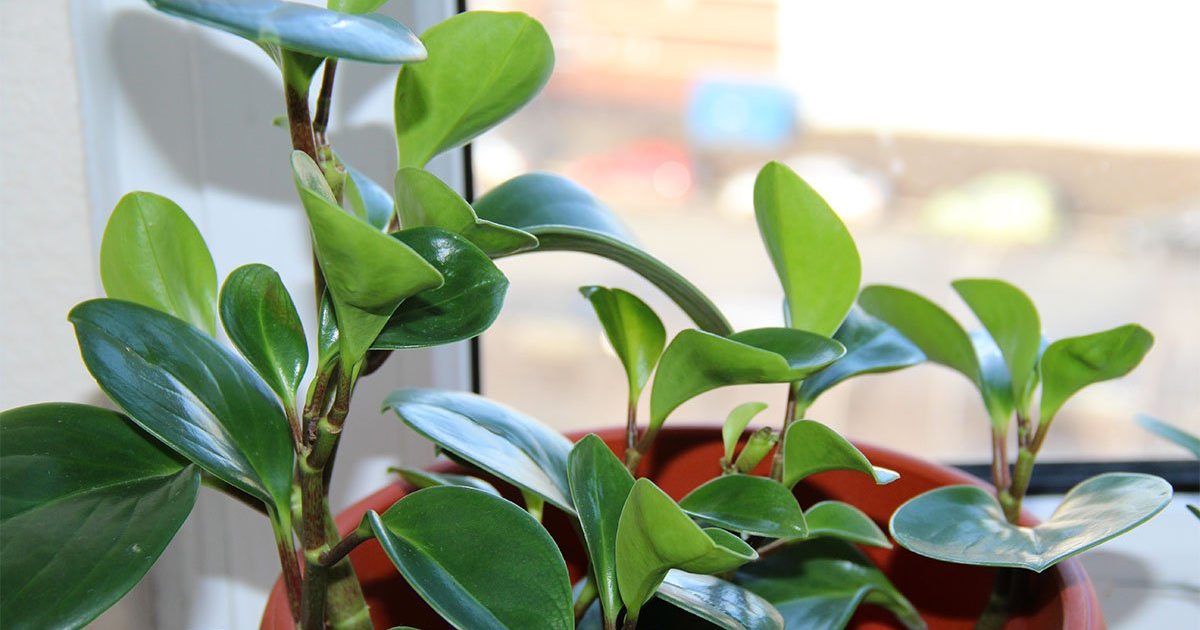 You may be interested in:
You may be interested in:Common Growing Questions
Bougainvillea has only just begun to gain popularity among flower growers, so its reaction to certain conditions of detention is not known to everyone.
If the soil in which the cuttings are planted is dry, then it can be moistened, but you should not be too zealous for watering. After 2 weeks, the stalk will be ready for transplanting into a new soil mixture. When transplanting the cuttings, it is better to use purchased soil.
Bougainvillea is an unpretentious indoor culture that always thanks its lush and long flowering for creating conditions close to the climate of its tropical homeland.

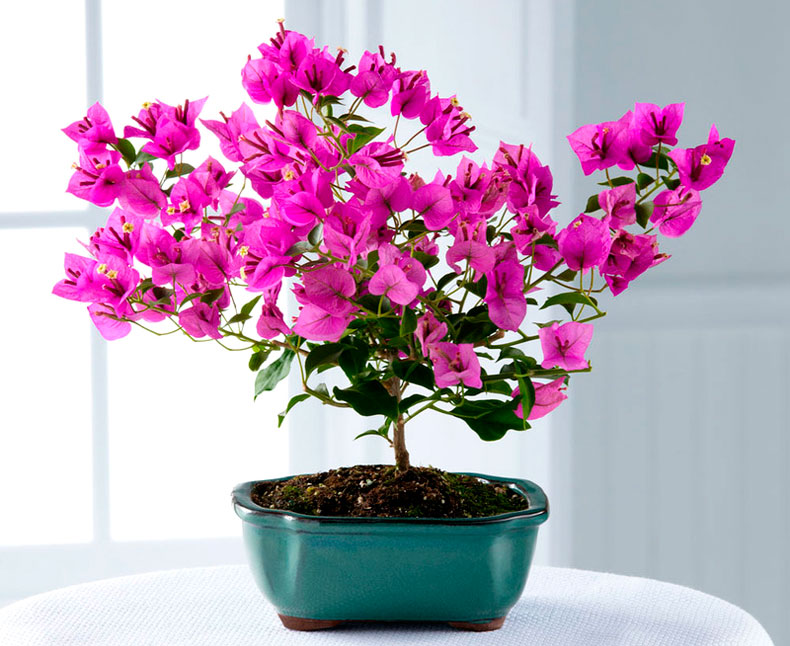
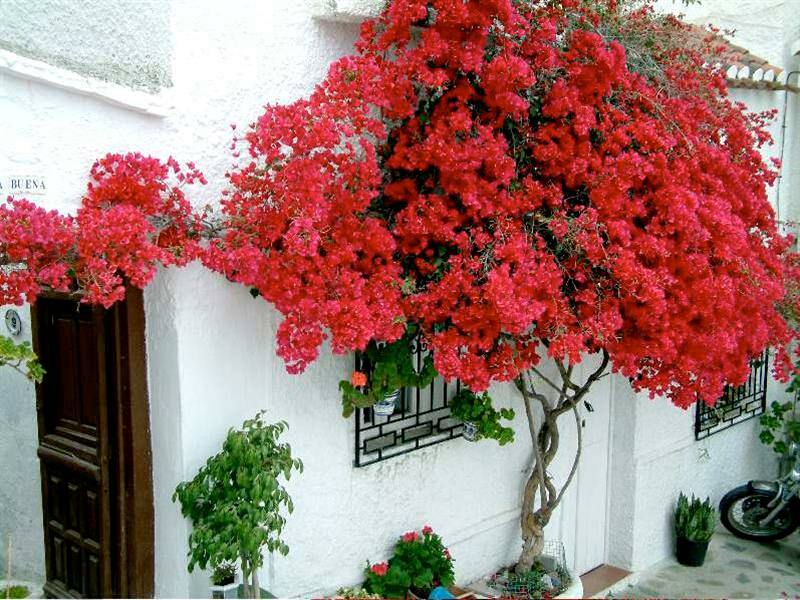
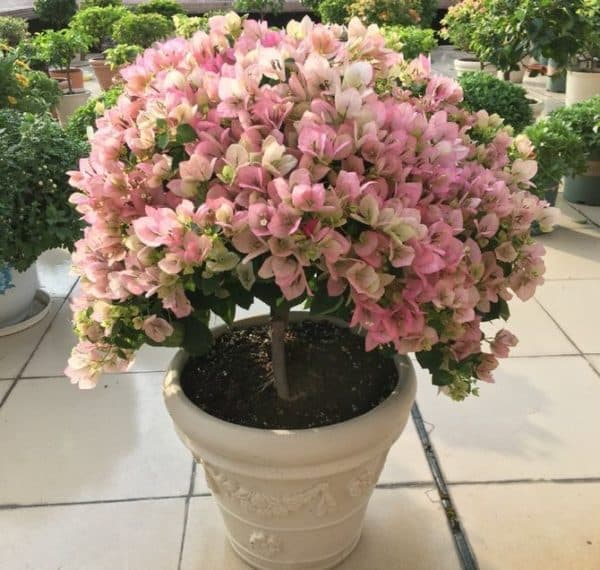
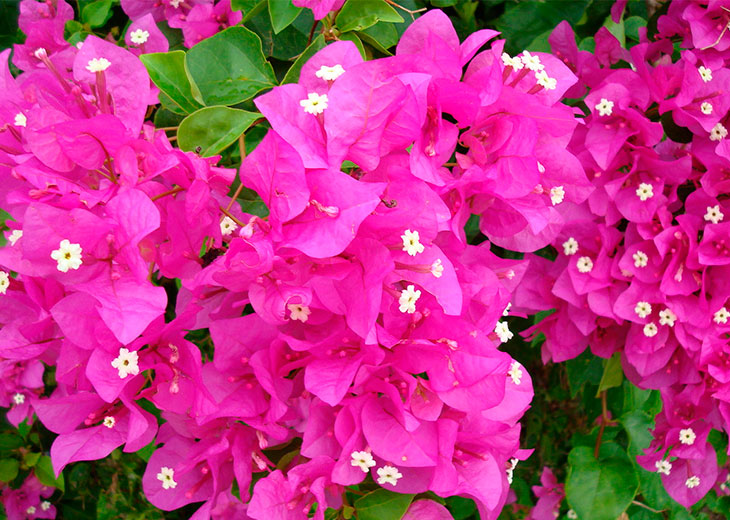



 Sow in the ground, without seedlings: 10 beautiful and unpretentious flowers
Sow in the ground, without seedlings: 10 beautiful and unpretentious flowers Platicodon planting and outdoor care
Platicodon planting and outdoor care Hosta - planting and care in the open ground in the Urals
Hosta - planting and care in the open ground in the Urals Oleander - care and growing at home
Oleander - care and growing at home